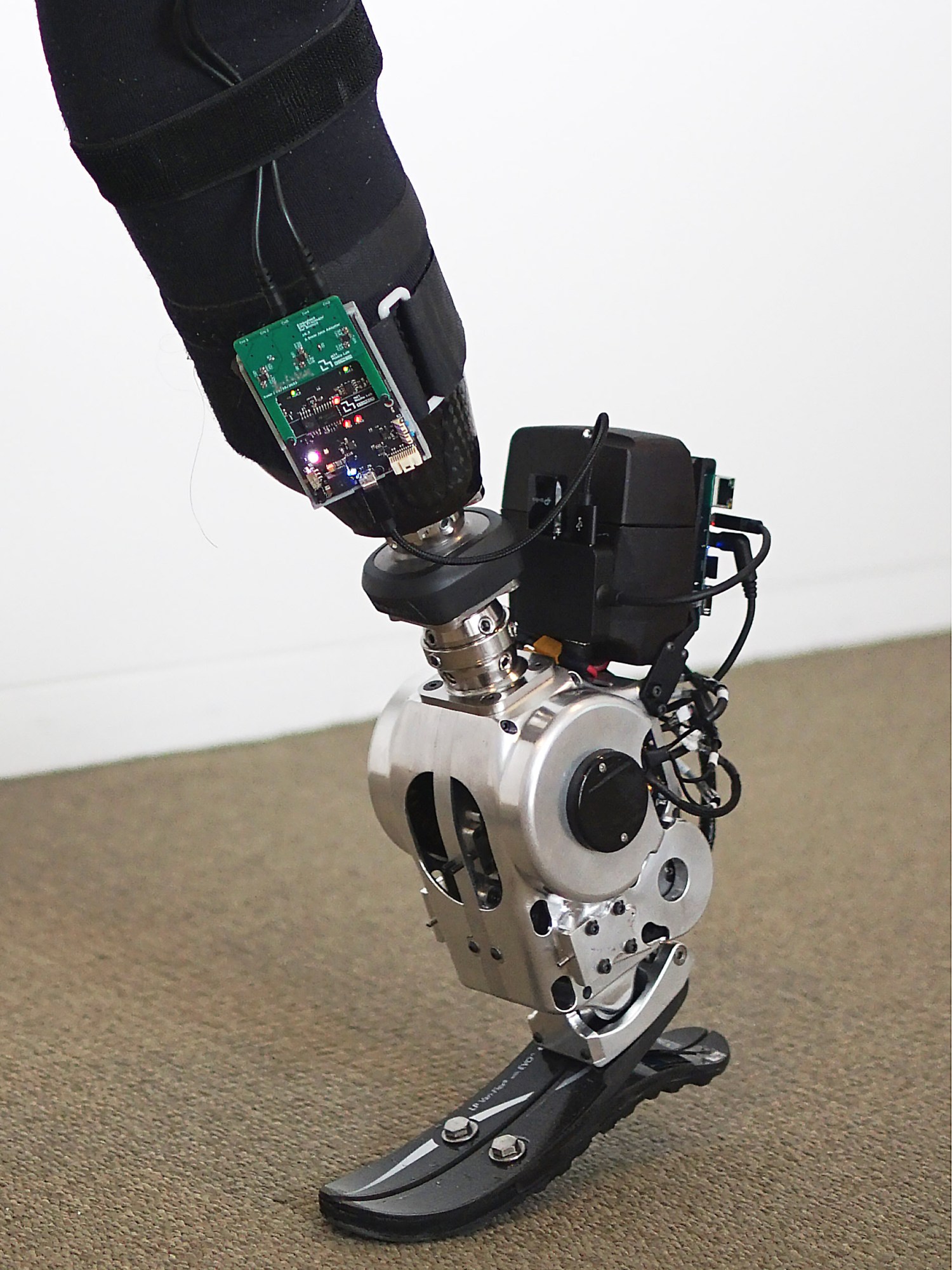A mind-controlled prosthetic feels more like a part of the wearer’s body and promises to make walking easier.

When someone loses part of a leg, a prosthetic can make it easier to get around. But most prosthetics are static, cumbersome, and hard to move. A new neural interface connects a bionic limb to nerve endings in the thigh, allowing the limb to be controlled by the brain. The new device, which is described today in Nature Medicine, could help people with lower-leg amputations feel as if their prosthesis is part of them.
“When you ask a patient ‘What is your body?’ they don’t include the prosthesis,” says MIT biophysicist Hugh Herr, one of the lead authors on the study. The work is personal for him: he lost both his lower legs in a climbing accident when he was 17. He says linking the brain to the prosthesis can make it feel more like part of someone’s anatomy, which can have a positive emotional impact.
Getting the neural interface hooked up to a prosthetic takes two steps. First, patients undergo surgery. Following a lower leg amputation, portions of shin and calf muscle still remain. The operation connects shin muscle, which contracts to make the ankle flex upward, to calf muscle, which counteracts this movement. The prosthetic can also be fitted at this point. Reattaching the remnants of these muscles can enable the prosthetic to move more dynamically. It can also reduce phantom limb pain, and patients are less likely to trip and fall.
Don’t settle for half the story.
Get paywall-free access to technology news for the here and now.
Subscribe now
Already a subscriber?
Sign in
MIT Technology Review provides an
intelligent and independent filter for the
flood of information about technology.
Subscribe now
Already a subscriber?
Sign in
“The surgery stands on its own,” says Amy Pietrafitta, a para-athlete who received it in 2018. “I feel like I have my leg back.” But natural movements are still limited when the prosthetic isn’t connected to the nervous system.
In step two, surface electrodes measure nerve activity from the brain to the calf and shin muscles, indicating an intention to move the lower leg. A small computer in the bionic leg decodes those nerve signals and moves the leg accordingly, allowing the patient to move the limb more naturally.
“If you have intact biological limbs, you can walk up and down steps, for example, and not even think about it. It’s involuntary,” says Herr. “That’s the case with our patients, but their limb is made of titanium and silicone.”
The authors compared the mobility of seven patients using a neural interface with that of patients who had not received the surgery. Patients using the neural interface could walk 41% faster and climb sloped surfaces and steps. They could also dodge obstacles more nimbly and had better balance. And they described feeling that the prosthetic was truly a part of their body rather than just a tool that they used to get around.
“It’s a very forward-thinking approach,” says Hamid Charkhkar, a biomedical engineer at Case Western Reserve University, who was not involved in the study. “Our limbs are not like shoes. They’re not worn over our bodies. They are integrally attached to our bodies via bones, muscles, and nerves.”
There are limitations. The surgery can be done during amputation or several years later, but it won’t work equally well for every patient. If it’s done later, for example, some people’s upper thigh muscles could have atrophied too severely for them to receive the full benefits.
The surgery connecting the shin and calf muscles has become the standard of care at Brigham and Women’s Hospital in Boston. But the surface electrodes that give patients full neural control of their limbs are a few years away from being clinically implemented. Plus, the neural interfaces have only been used in laboratory settings, and it will be important to know how they hold up in the real world.
Herr and his team at MIT hope to provide users with even greater control over their prosthetic limbs. In the future, their efforts will likely involve replacing the surface electrodes with magnetic spheres, which can more accurately track muscle dynamics.
“The goal that we have is to really reconstruct bodies, to rebuild bodies,” says Herr. And to fully achieve that ambition, he says, “neural integration and embodiment is our long-term goal.”





